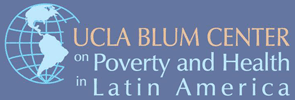Report from the field: 2015 UCLA Blum Summer Scholar Adriana Quiquivix, in México City, México
Report from the field: 2015 UCLA Blum Summer Scholar Adriana Quiquivix, in México City, México
by Adriana Quiquivix, Master in Urban Planning (MURP) Candidate
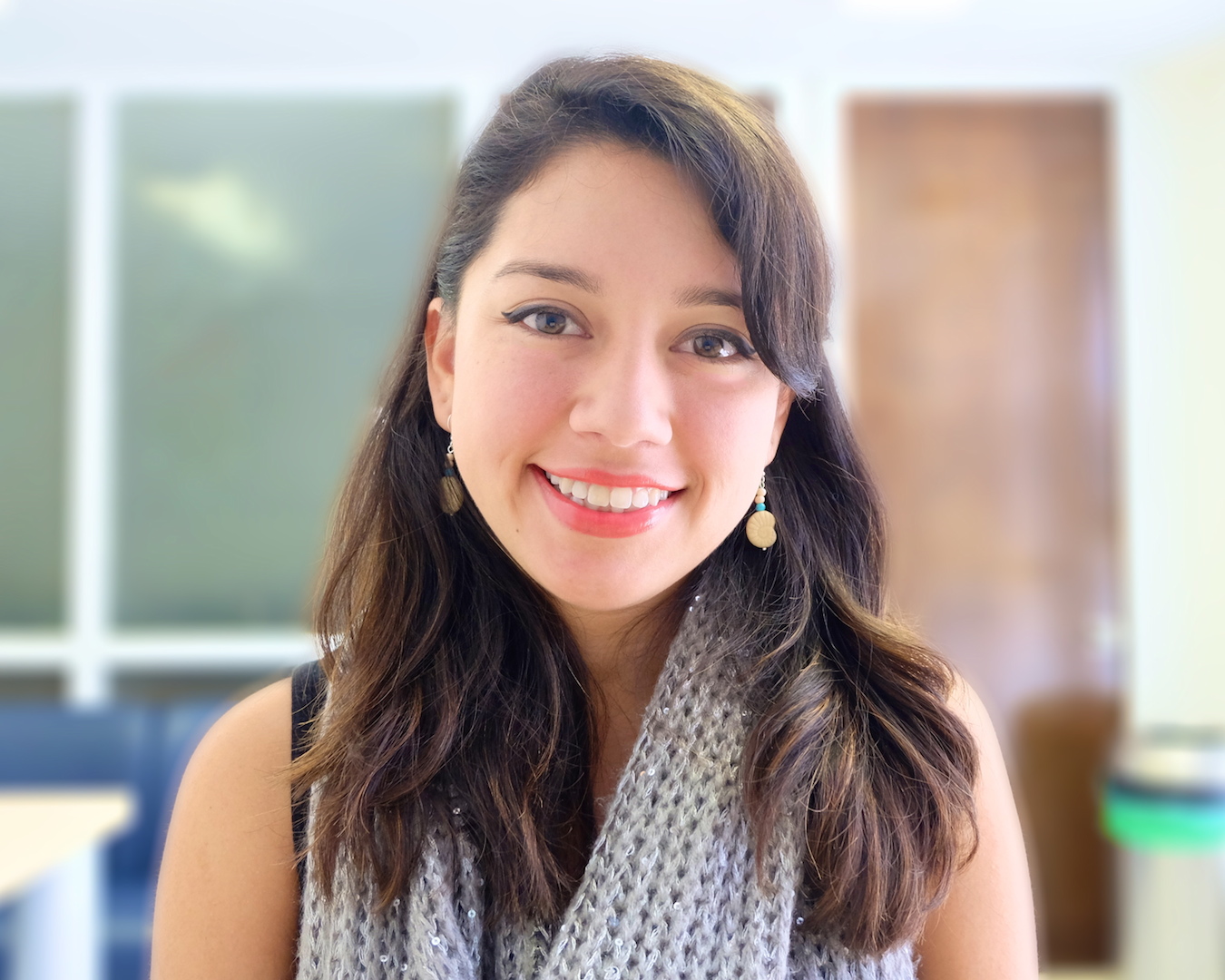 A)
A) 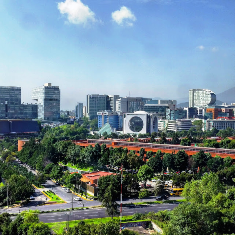 B)
B)
Deciding to Go Abroad
I always told myself I would never travel abroad for academics. In addition to having a slight fear of flying, nothing ever captured my attention enough to leave my home, family, or comfort zone, for months. As a master's student, I thought I felt the same way until I came across the UCLA Blum Center On Poverty and Health in Latin America Summer Scholars Program. This was the opportunity I was waiting for. Its mission embodied everything I ever worked for- to positively impact the future health and well-being of my Latin American communities. Now, as a UCLA Blum Center Summer Scholar, I am directly learning from the motherland that many in my community came from and sharing my skills to have a positive impact in their lives.
Landed in México
The UCLA Blum Center matched my skills and interests to work as a visiting researcher in Mexico City with Dr. David Here. Dr Heres is an Economics Professor and researcher at a public University known as El Centro de Investigación y Docencias Económicas (CIDE). Little did I know when I accepted my offer, CIDE is known as the best school of economics in the country. This was quite intimidating given my basic knowledge in economics and econometrics compared to pretty much everyone at CIDE. However, the research Dr. Heres and I are working on benefits from our combined expertise and perspectives.
The Built Environment, Pollution, and Transportation
Our research aims to estimate the impact of different built environment characteristics on people's mobility patterns in Mexican Zonas Metropolitanas (ZM). Zonas Metropolitanas are similar to Metropolitan Statistical Areas (MSAs) in the United States. The boundaries for these zones are defined based on population. We chose to focus on ZMs with high levels of pollutants and poor transportation options. After looking at the data, we identified these four ZMs as México del Valle, Guadalajara, Monterrey, and Puebla-Tlaxcala. Currently, we are gathering a number of data variables such as fuel costs by type of fuel, transportation costs by type of transportation, residential density, business density, amenities (proximal access to parks, main roads, and public transportation), and sociodemographics for these four ZMs. I will be working on organizing and computing this data by using both Excel and Geographic Information Systems (GIS). Once this part is all done, we plan to use an econometric model in which spending on fuel and transportation are explained by the rest of our variables. Dr. Heres is the expert on this latter part. However, I look forward to learning how to use STATA in order to help with this part of the research analysis as well!
Living Among my Area of Study
I spend my days in an office in front of my computer with a heater by my side. None of my work involves going out in the field to gather data. At this point, the data has been gathered; I just have to find it, clean it, and put it to use. So, why not work remotely?
Being in México gives me the opportunity to directly learn from the people and geography I am working with. Because I am in México, I feel greater meaning and responsibility for the work I am doing. I am being touched by the lives being affected by my research and I am experiencing part of the built environment, pollution, and transportation issues first hand. For example, yes, México City has a great rail and bus system. I have never had to wait more than five minutes to hop on a bus or train. However, getting to these bus or rail stops takes great effort. Based on my experience alone, I have to say that the lack of priority for pedestrians plays a significant role.
Sidewalks along main roads or highways are often nonexistent. So, if you need to go somewhere that traverses these roads, you have no other choice but to hop on a vehicle or bus. This becomes a problem for people with limited income, and with disabilities. I have yet to see a bus with an on-ramp.
Sometimes, you have to cross wide intersections without hand signals warning you when to stop and go. I have been caught in the middle of the street when the light all of the sudden tuns green against me.
The only way to get across many streets is through pedestrian bridges that are often placed too far apart from a center location. Again, the elderly and people with disabilities are greatly affected.
For these and many other reasons, public transportation is greatly see as an inferior option and those who can afford to drive will drive. For example, I met a student at CIDE that prefers to pay 80 pesos of toll a day than to take public transportation for 10 pesos a day. Choices like this, further increases pollution and reduces people's health and well-being.
Connecting Our stories
Beyond my research with CIDE, as UCLA Blum Center Summer Scholar, I have also been privileged to meet people who have trusted me with their stories and perceptions of safety, inequity, and the government. I have witnessed protests, and I am amazed by the level of resilience and determination so many families have with great hope of some day living in a more equal and just society. As I listen to these stories and experiences and the experiences of communities of color in my country. Although with varying degrees, we also face issues affecting our health and well-being.
Living in México and learning first-hand about people's concerns regarding the built environment has greatly enhanced my work as a visiting researcher. Furthermore, it convinces me that researchers should always explore our study areas - be their neighborhoods, states, or countries. After all, learning from each other's struggles and achievements will only help us become better informed when making decisions regarding our quality of life.
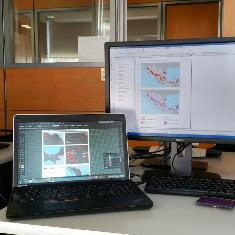 B)
B) 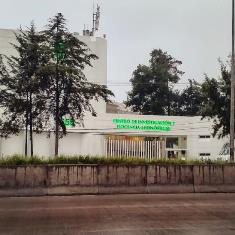 C)
C) 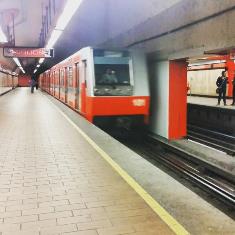 D)
D) 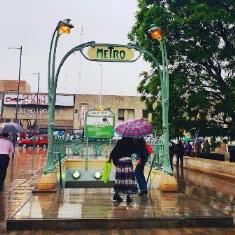 E)
E)
A) 2015 UCLA Blum Summer Scholar Adriana Quiquivix
B) View of Santa Fe from library at CIDE. Santa Fe is home to a number of well-known corporations and the largest mall in the country. The library was my office during my first two weeks at CIDE.
C) Using GIS and Adobe Illustrator to create maps showing the geographic distribution of the highest polluted cities in the country.
D) View of CIDE from my living quarters. I live so close! I just have to cross a pedestrian bridge to get across.
E) One of the metro lines during off-peak hours. They arrive every two-to-three minutes.
F) Beautiful entrance to the metro. If you need to use an elevator, you have to walk at least another block across the street.
